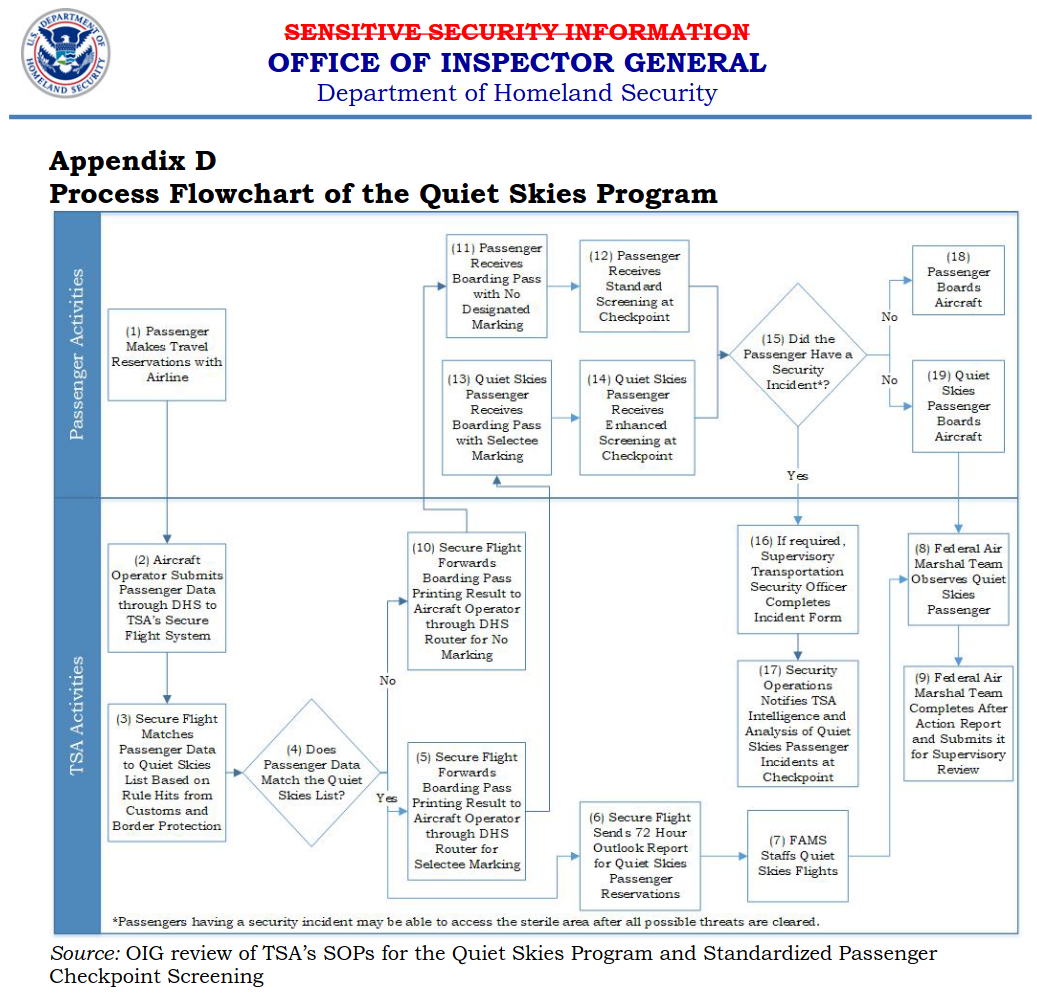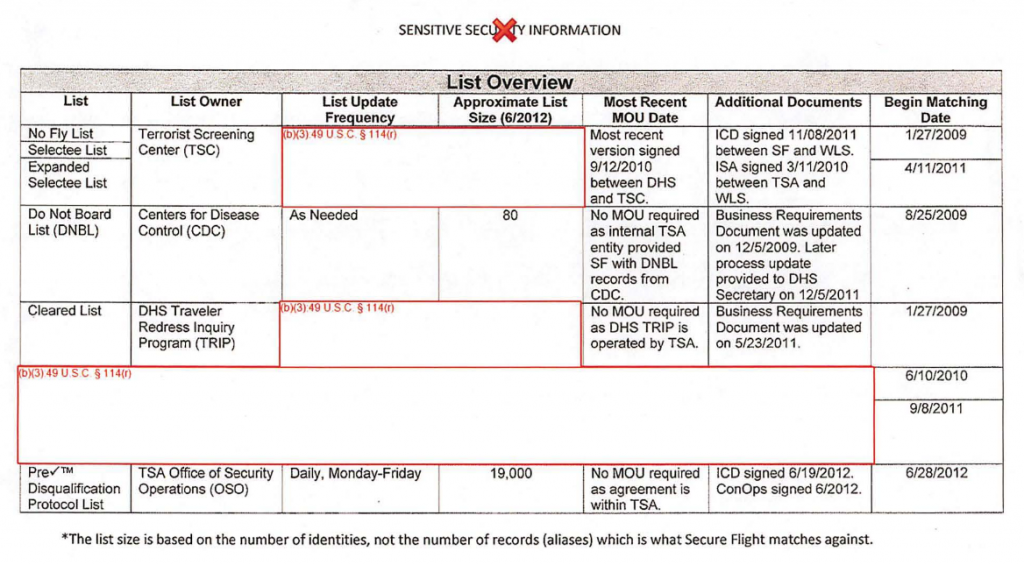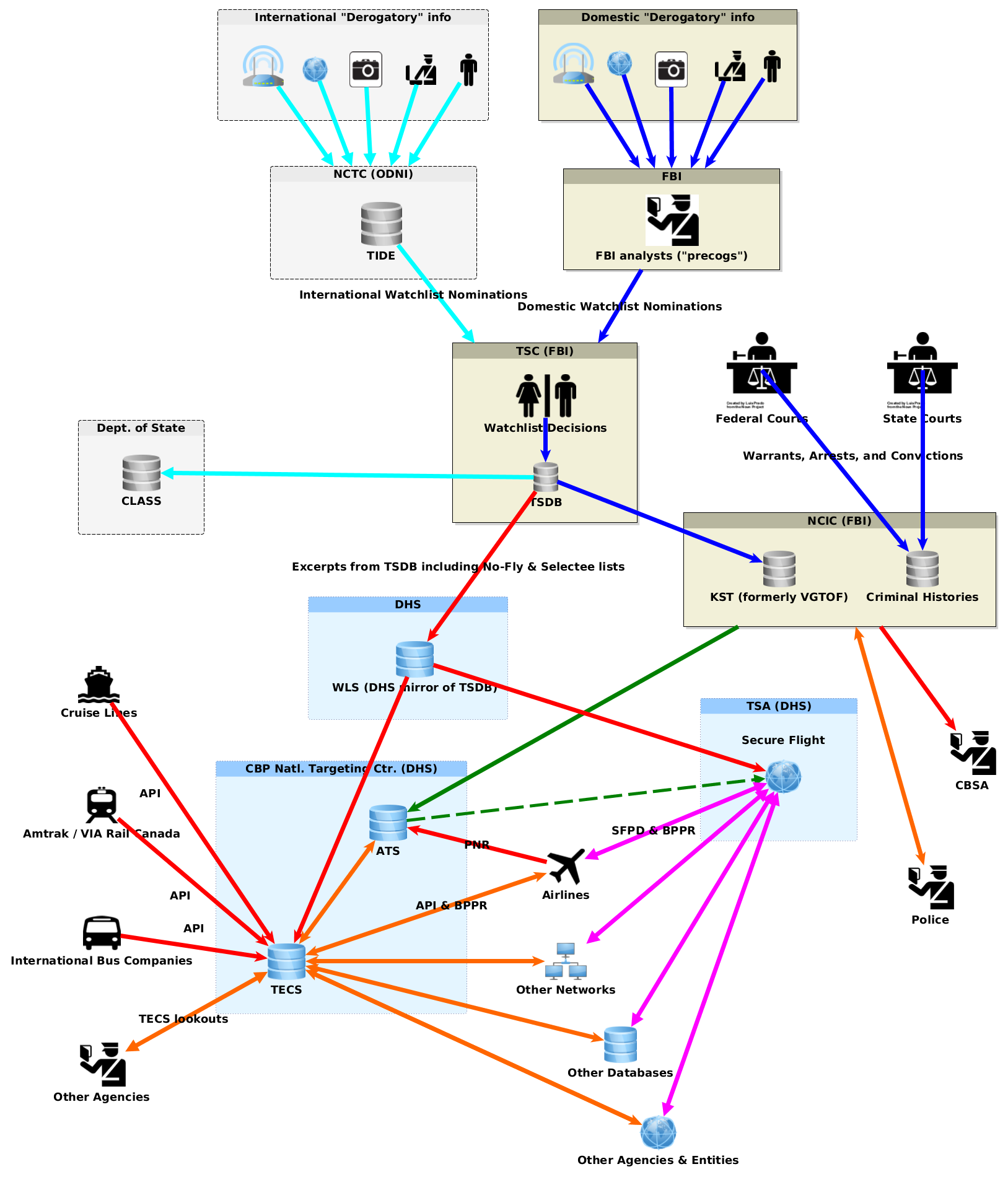Has the TSA added immigration enforcement to “Secure Flight”?
Arrest warrants have never been disclosed to be part of the Secure Flight algorithm used by the Transportation Security Administration (TSA) to process information about each domestic US airline passenger and decide whether to send the airline a Boarding Pass Printing Result (BPPR) authorizing the airline to issue a boarding pass or take other action.
But at least three incidents have made the news in the last month that together suggest that the TSA may have added immigration orders to the Secure Flight ruleset, turning US airports and domestic flights into traps for unwitting foreign citizens.
- On October 29th, Marta Brizeyda Renderos Leiva, a citizen of El Salvador, was arrested by agents of the Department of Homeland Security (DHS) at Salt Lake City International Airport while on her way to a flight to visit relatives in Maryland.
- On November 20st, Any Lucia Lopez Belloza, a citizen of Honduras who came to the US as a small child and is now a freshman scholarship student at Babson College in Wellesley, MA, was arrested at Logan International Airport in Boston when she tried to check in for a flight to Austin, TX, to surprise her parents with a Thansksgiving visit. (On November 21st a Federal judge in Boston issued an order prohibiting the government from transferring Ms. Lopez Belloza out of Massachusetts or the US while her petition for a writ of habeas corpus was pending. The government ignored the court order and deported her to Honduras on November 22nd.)
- On November 22nd, Prof. Vahid Abedini of the University of Oklahoma, an Iranian citizen, was arrested by DHS agents at the Will Rogers International Airport in Oklahoma City while on his way to an academic conference in Washington, DC.
Each of these individuals was unaware that there was an immigration order for their arrest or deportation. And there is no apparent basis or methodology for DHS to have known when and where to intercept them at airports other than matching of airline reservations and immigration enforcement orders — something never previously disclosed.
The Feds could have learned of planned domestic air travel by searching records of tickets settled through the Airlines Reporting Corp. (ARC) clearinghouse under a program that was exposed earlier this year and is supposedly now set to “sunset” by the end of this month. But that wouldn’t have enabled the Feds to block the issuance of boarding passes, as reportedly happened in some of these recent cases.
At any time, there are millions of records of arrest warrants in the FBI’s National Crime Information System (NCIC) database. Many of these are inaccurate or out of date, such as long-since-quashed bench warrants for failure to appear in traffic court or pay fines on time. Local courts often report to NCIC when warrants are issued, but fail to report when they are cleared. Hundreds of people are arrested every day after traffic stops when local police run check on motorists and find warrants listed in NCIC.
Three million people a day travel by air in the US, sixty times as many as are stopped on the roads by local police. If every domestic airline reservation were checked against NCIC for outstanding warrants, thousands of domestic travelers would be arrested at US airports every day. That simply doesn’t happen. So far as we can tell, at least until the last month, you could be wanted for murder and fly back and forth across the US without ever being stopped — just as you can walk down the street without being required to identify yourself or subjected to a warrant check without probable cause to suspect you of a crime.
This is as it should be. The US Constitution rightly prohibits general warrants or all-purpose law enforcement checkpoints or searches without individualized probable cause.
Earlier this month we noted the unusual arrest of UK citizen and political commentator Sami Hamdi at San Francisco International Airport on October 26th when he went to check in for a domestic flight to the next stop on his US speaking tour. At the time, we speculated that perhaps the government had added Mr. Hamdi to its no-fly or “selectee” lists as a suspected terrorist. We already know that these lists are part of the Secure Flight ruleset. Now we wonder whether Mr. Hamdi’s treatment was an early case of the expansion of Secure Flight from a system ostensibly used for aviation security to a more general police dragnet.
We’ve been getting tips for years that some officials of the TSA, DHS, and other law enforcement agencies want to check all airline passengers for outstanding warrants. That would be technically straightforward. Once an algortithmic checkpoint is in place, it’s relatively easy to add new list-based or attribute-based rules to the algorithm. And the TSA has also wanted all-purpose authority for searches, seizures, and detention.
In court, though, the TSA to date has always pretended that warrantless Secure Flight “vetting” and warrantless administrative searches of airline passengers are used solely to identify people and things that are demonstrably dangerous to aviation. Using Secure Flight for immigration enforcement would require a completely new legal rationale, and would open the door to even wider use of airports as general law enforcement checkpoints.
In addition, the most recently-disclosed version of the TSA’s internal staff directive for disclosure of Secure Flight Data (SFD), issued sometime after January 20, 2025, says that:
SFD shall not be shared for purposes of ordinary law enforcement or tracking the movement of an individual who is not a potential or confirmed match to a watch list…. TSA will only respond to a written request for SFD by a law enforcement agency when there is a nexus to terrorism, transportation security, or national security for individuals not listed on the consolidated and integrated terrorist watch list. Exceptions to this policy may be granted on a case-by-case basis where an exigent threat to life or a similar extraordinary circumstance suggests that disclosure is warranted.
Routine use of Secure Flight for general law enforcement (warrant checks) or immigration enforcement would either violate this policv or have required a change in policy.
We welcome any information that can shed light on what’s really happening.
Please let us know of you hear of other immigration or criminal arrests at airports that appear to have been based on matching of domestic airline reservations with NCIC data.


